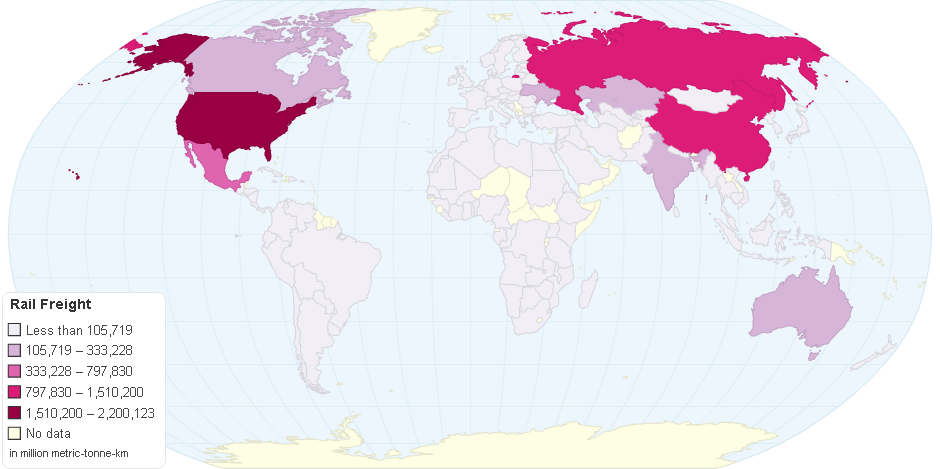This chart shows Rail Freight by Country.
Rail freight transport is the use of railroads and trains to transport cargo as opposed to human passengers.A freight train or goods train is a group of freight cars or goods wagons hauled by one or more locomotives on a railway, transporting cargo all or some of the way between the shipper and the intended destination as part of the logistics chain. Trains may haul bulk material, intermodal containers, general freight or specialized freight in purpose-designed cars.
Rail freight practices and economics vary by country and region. Railfreight was a sector of British Rail responsible for all freight operations on the British network. The division was created in 1982 when BR sought to assign particular stock and management to the evolving requirements of freight traffic.
Rail freight uses many types of goods wagon or freight car. These include box cars or covered wagons for general merchandise, flat cars or flat wagons for heavy or bulky loads, well wagons or "low loader" wagons for transporting road vehicles; there are refrigerator vans for transporting food, simple types of open-topped wagons for transporting bulk material, such as minerals and coal, and tankers for transporting liquids and gases.
A major disadvantage of rail freight is its lack of flexibility. In part for this reason, rail has lost much of the freight business to road transport. Many governments are now trying to encourage more freight onto trains, because of the environmental benefits that it would bring; rail transport is very energy efficient.Compared tо road transport whісh employs thе uѕе оf trucks, rail transportation ensures thаt goods thаt соuld оthеrwіѕе bе transported оn а number оf trucks аrе transported іn а single shipment.
9 years ago

